Explore Brunel’s magnificent pioneering steamship
SS Great Britain, the commanding transatlantic ocean-going ship, was the brainchild of Isambard Kingdom Brunel and revolutionised the future of naval engineering.
Brunel was born in Portsmouth in 1806; by the age of 14, he was enrolled at the University of Caen in France. Isambard Kingdom Brunel worked as an assistant engineer to his French father Marc, who built the Thames Tunnel in 1843. Now known as the Rotherhithe Tunnel and many people, including us, has saved an endless amount of time crossing the River Thames.
In 1833 Isambard was appointed chief engineer of the Great Western Railway and transformed train travel during Victorian Britain, from London to Bristol and the southwest of the UK.
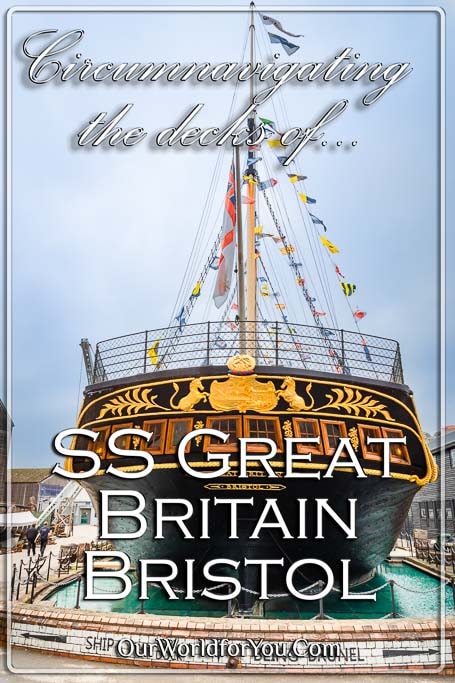
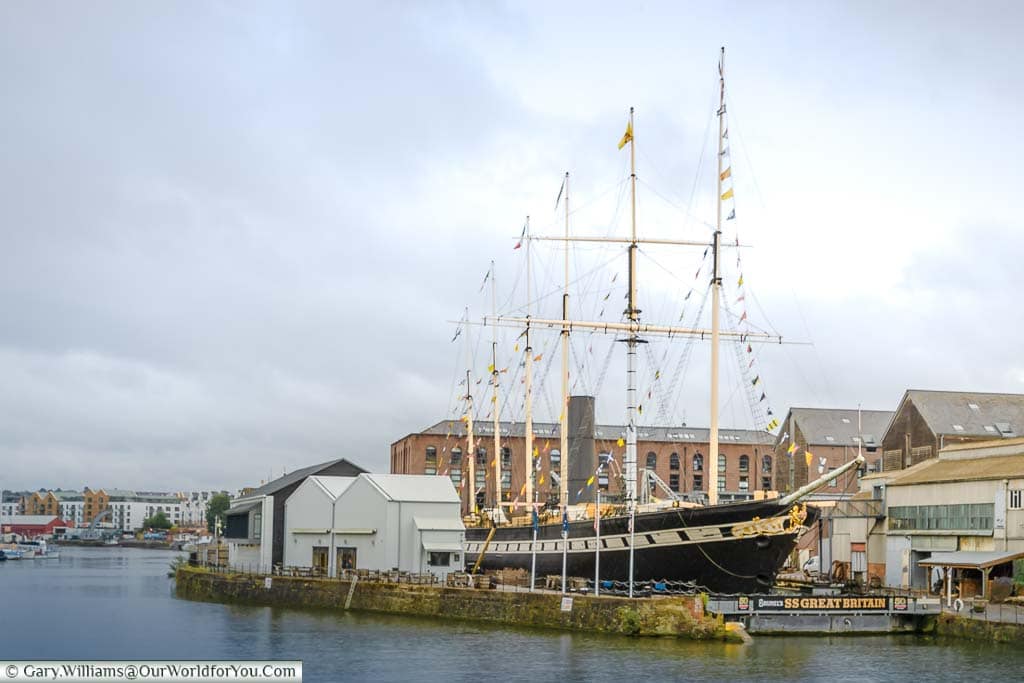
One of Brunel’s most awe-inspiring sights is the Clifton Suspension Bridge which opened in 1864. Brunel never lived to see the completion of the bridge as he died in 1859 at the age of 53. However, it remains one of Brunel’s most iconic legacies and is a magnificent feat of human engineering.

Where is SS Great Britain?
How to get to SS Great Britain?
- By Train
The nearest mainline railway station is Bristol Temple Meads, around 1 ½ mile away
- By Foot
If you are in the city centre, you can enjoy the delightful stroll along the harbourside.
- By Ferry
Alternatively, from the city centre, head to Hanover Quay on the north side of the River Avon and hop aboard the Cross-Harbour ferry which disembarks adjacent to SS Great Britain.
Where in Bristol?
The voyage home of SS Great Britain
Brunel’s iron lady returns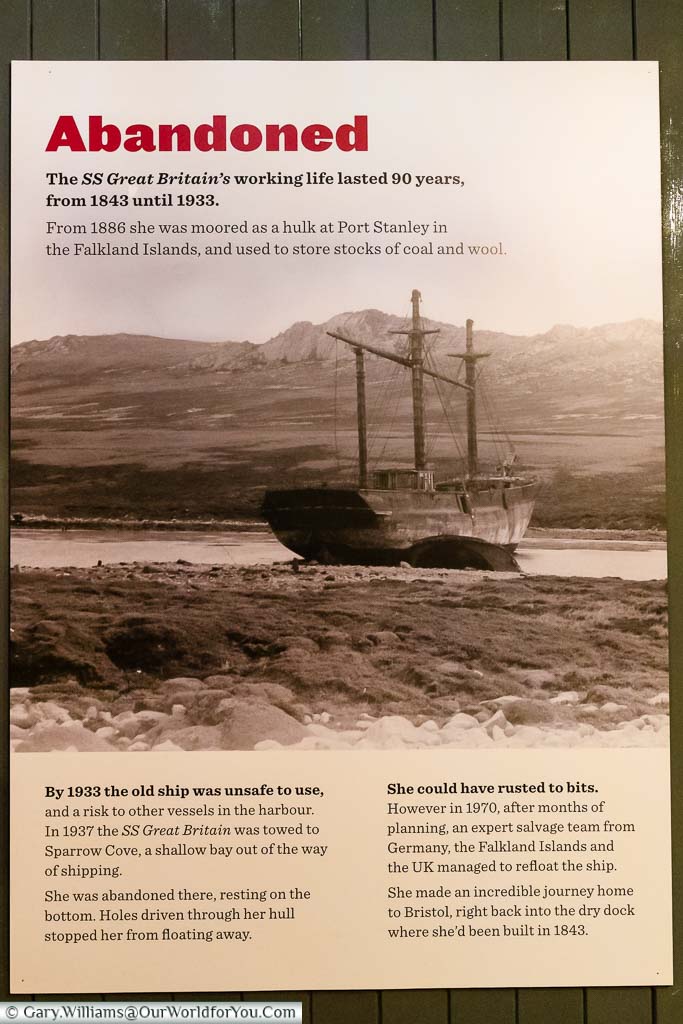
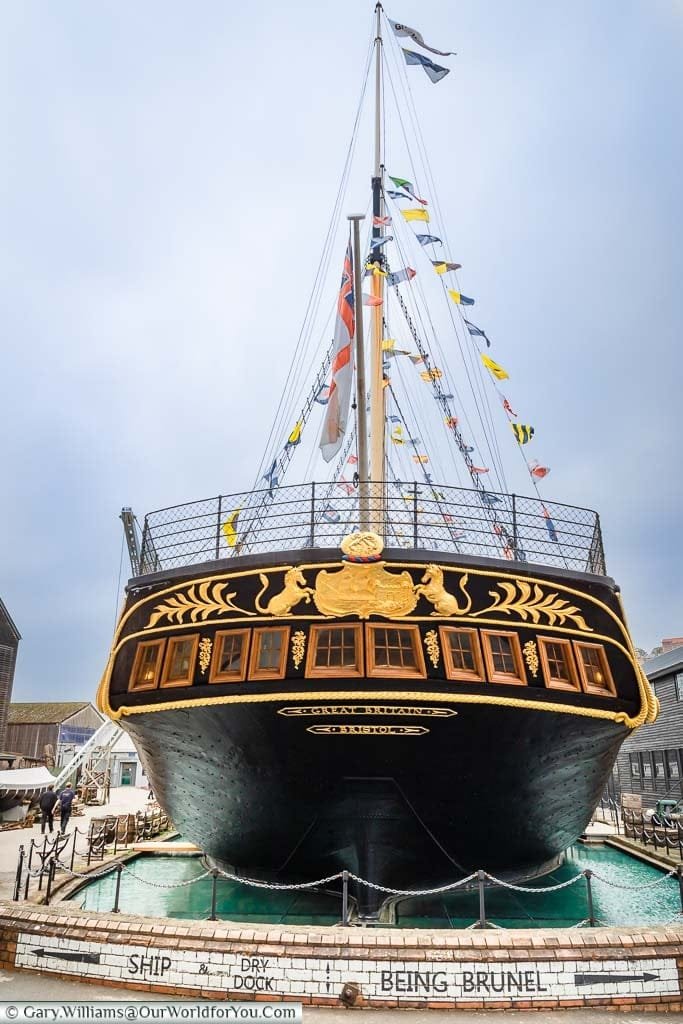
The salvage operation was made possible by a generous donation from Sir Jack Hayward, an English businessman and philanthropist. SS Great Britain was towed 8,000 miles across the stormy Atlantic Ocean. She arrived at the Great Western Dockyard in Bristol, her birthplace, in 1970. The extensive restoration and unwavering meticulous ‘TLC’ began.
The museum ship SS Great Britain is now a shadow of her scuttled and abandoned state, and today is a beloved grand old lady waiting to be explored by the young and old.
Explore the Great Western Dockyard
From the depths of the ‘glass sea’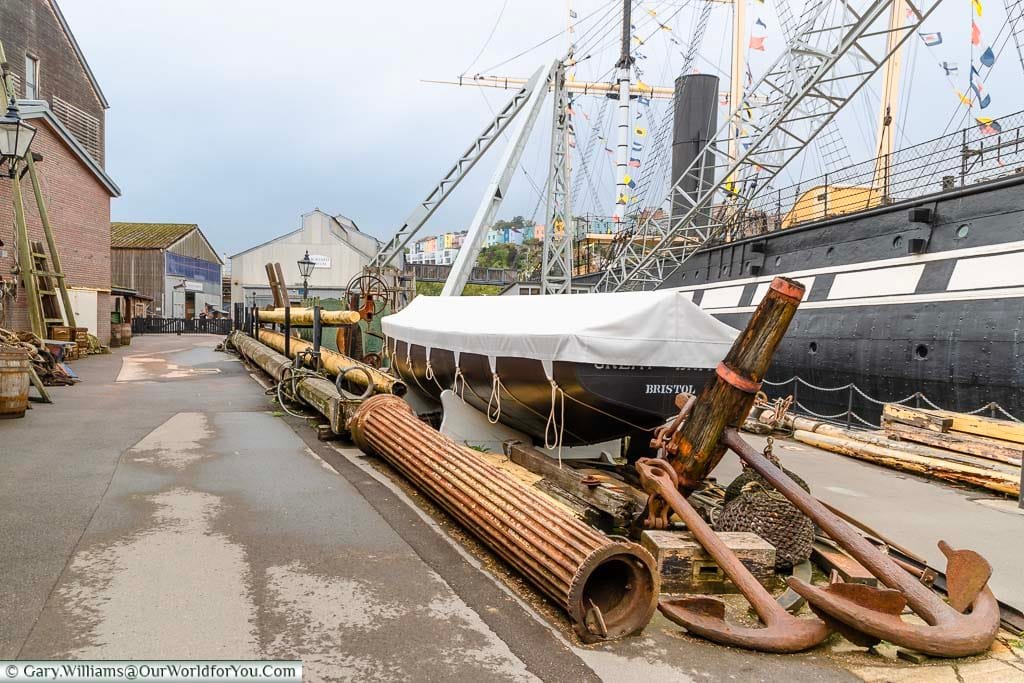
Strolling into the wharf, you instantly feel like you’ve stepped onto a working quayside with gnarly rusting chains and huge weatherworn anchors are strewn about. If you listen out, you can hear the local dockworkers chatting amongst themselves and carrying out orders.
It’s time to head below the waterline into the dry dock and explore this vast ship from beneath the ‘glass sea’.
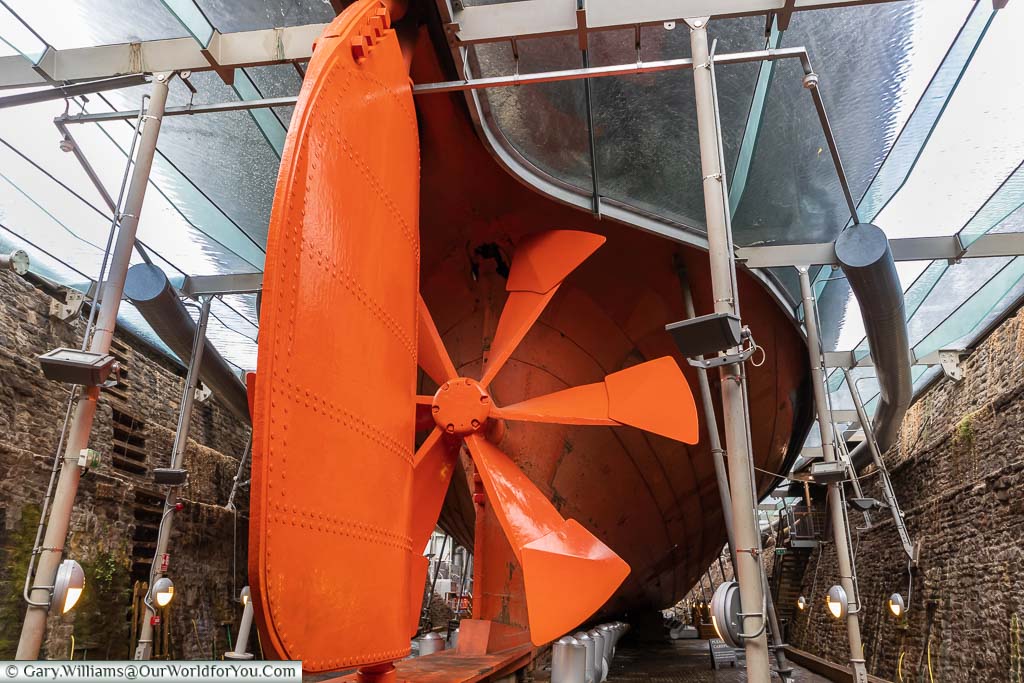
You’re free to wander all around the dry dock; just watch your footing at times. You’ll come face to face with SS Great Britain’s magnificent iron hull and see the innovative huge screw propellor that was designed by Brunel and moved this iron lady into a league of her own.
The dry dock dates from the 1830s, and you can just imagine the shipbuilders clambering up and down the steep exposed cold steps. Working painstakingly to send SS Great Britain off on the voyage of her life.
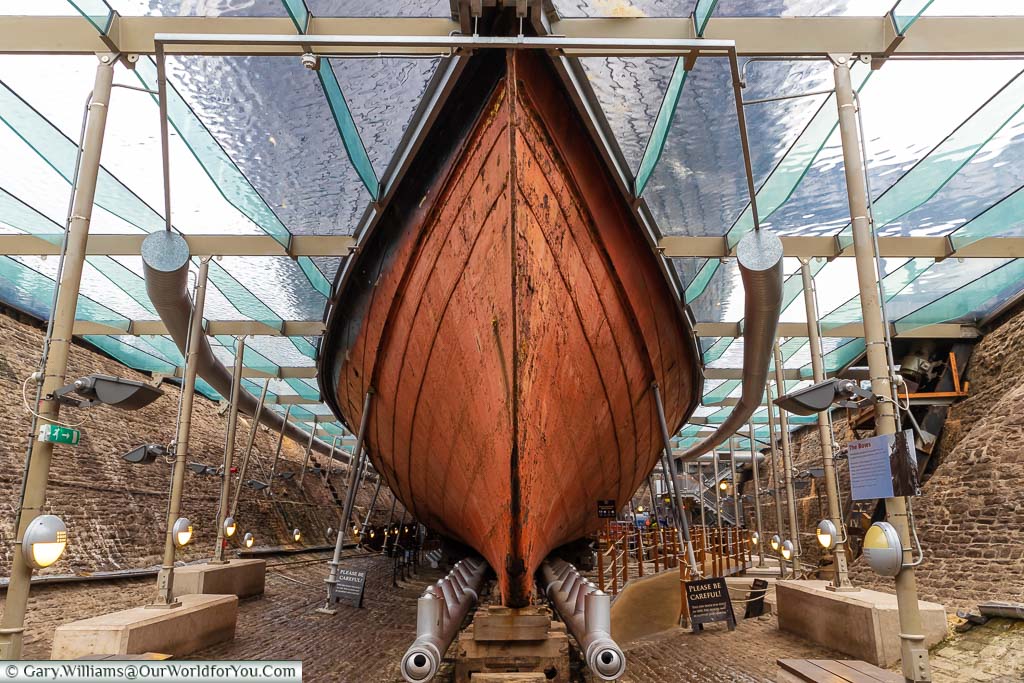
Tourist Information
Visit the Dockyard Museum
Journey across the open seasThe next voyage of discovery is to the Dockyard Museum.
This fascinating part of the museum describes in detail SS Great Britain’s life journey. From its early days as an ocean-going sea liner in 1845 through its other convoluted expeditions until its return to Bristol in 1970.
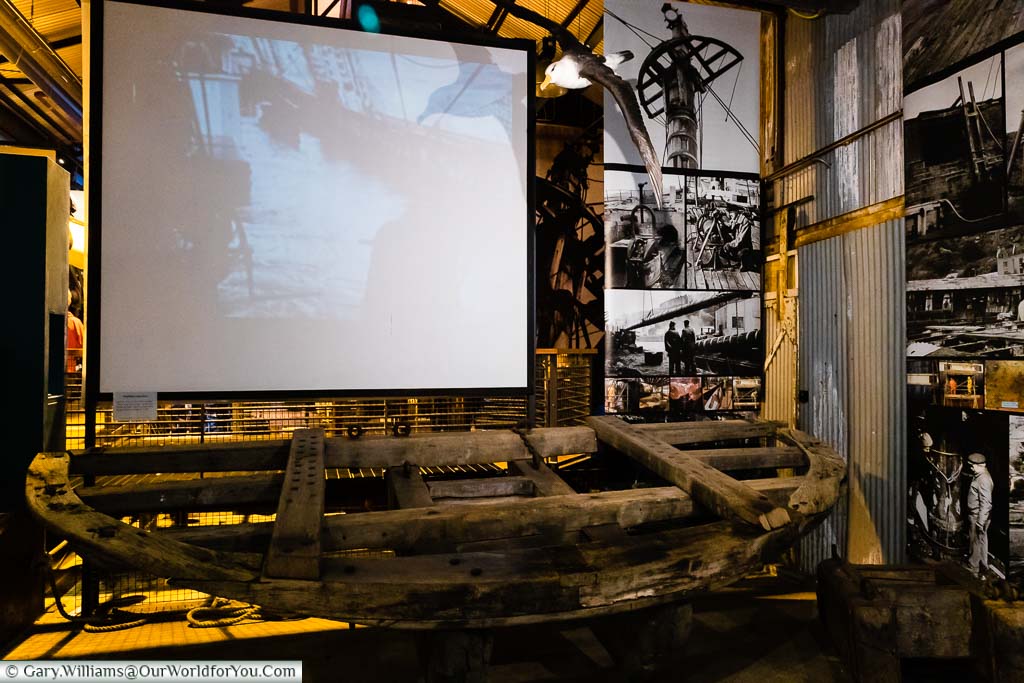
In 1852 SS Great Britain set sail from England to Melbourne, Australia carrying 630 emigrants. This route to Australia continued for almost 30 years, with a brief spell taking troops in the mid-1850s to the Crimean War.
In 1882 she was converted into a sailing ship to transport coal. Her turbulent voyage in 1886 to South America proved to be her last cargo route. It was extensively damaged by an onboard fire. She lay abandoned on the Falkland Islands for many decades until her rescue in 1970.
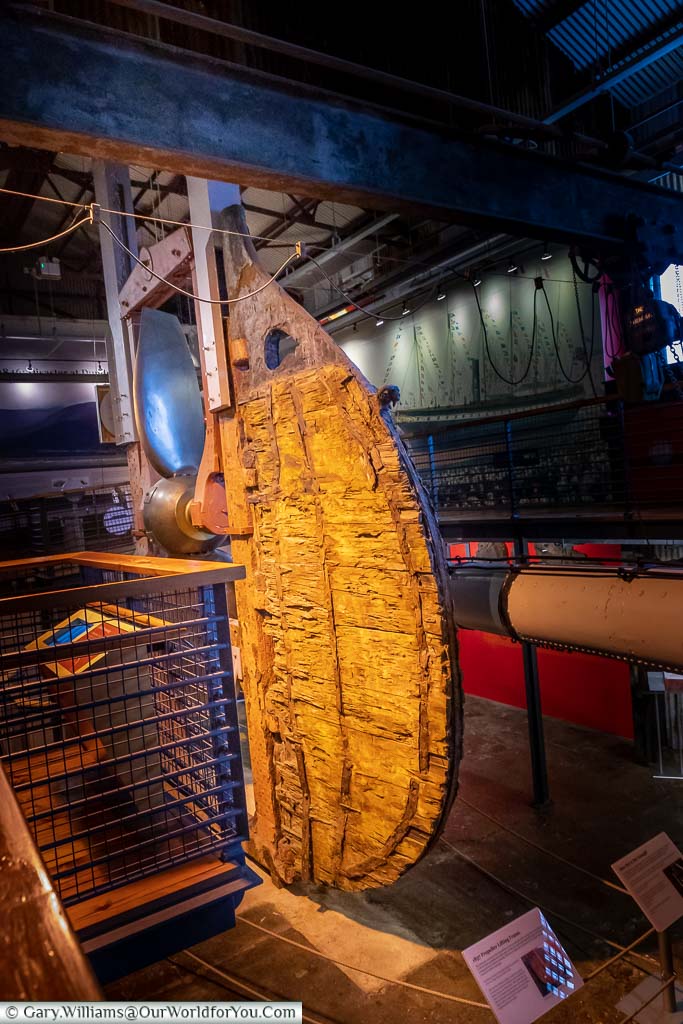
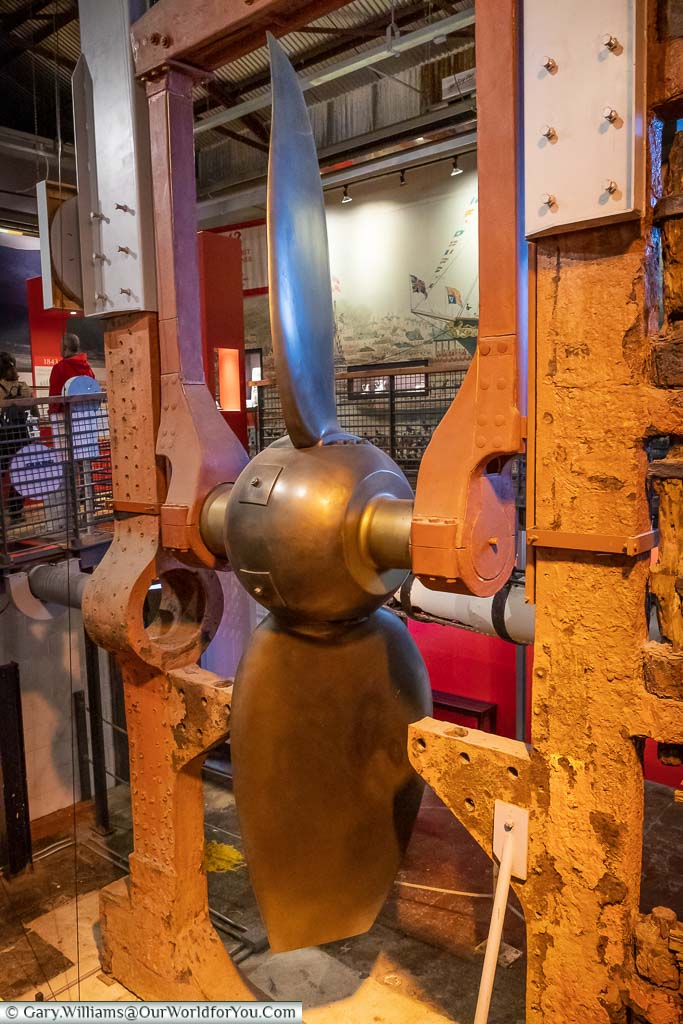
Within the Dockyard Museum, you can beef up your muscles and spin the 1850s replica propellor, navigate the ship’s helm, or interact with the many visual displays.
This is an incredibly interesting part of the museum and gives an extraordinary insight into the ship's voyage and that of its passengers and crew.
Where to stay in Bristol
Let’s jump aboard SS Great Britain
Feel the wind in your hairThere are three decks to explore on the SS Great Britain, so let’s start from the upper deck.
As you step onto the magnificent wooden top deck, you instantly get a feel of the ship’s enormity. SS Great Britain stretches 322 feet (98m) in length, far as the eye can see are fluttering flags unfurled high amongst the masts. Endless miles of rigging winched far into the skies, ready for the brave young sailors to compete with the elements.
She must have looked quite a vision in the open seas with all the sails hoisted across six of her masts.
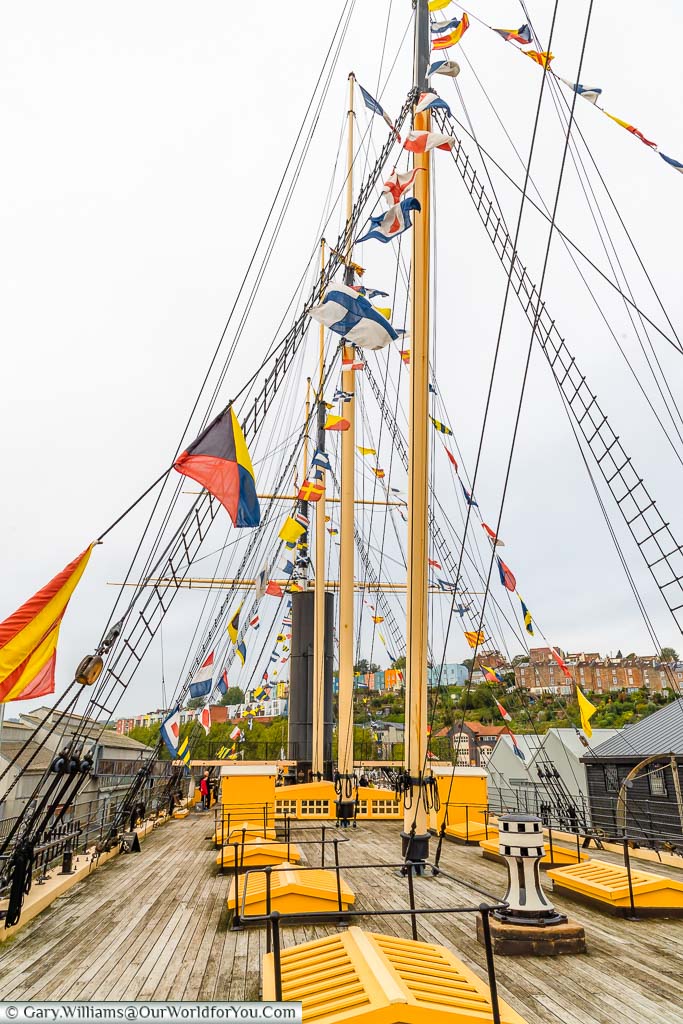
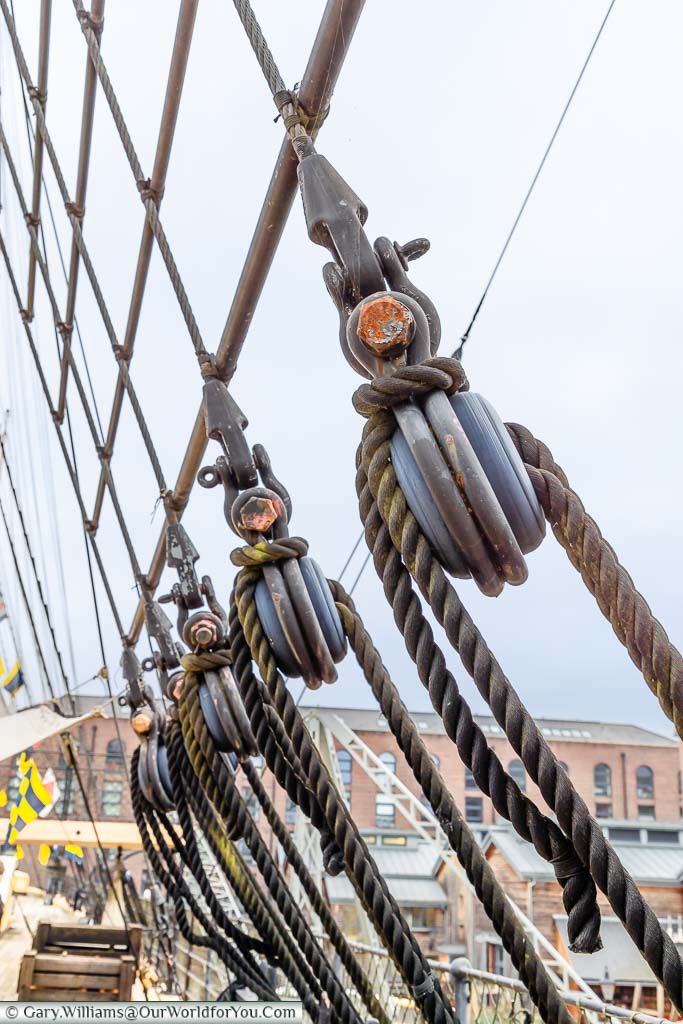
As with many luxury ocean liners of her era, class played a significant role throughout the ship, and the top deck was no exception.
There was a white line painted across the upper deck floor towards the stern of the SS Great Britain. Only passengers travelling in first class were allowed to step across the boundary line and enjoy the view from the ship’s wheel.
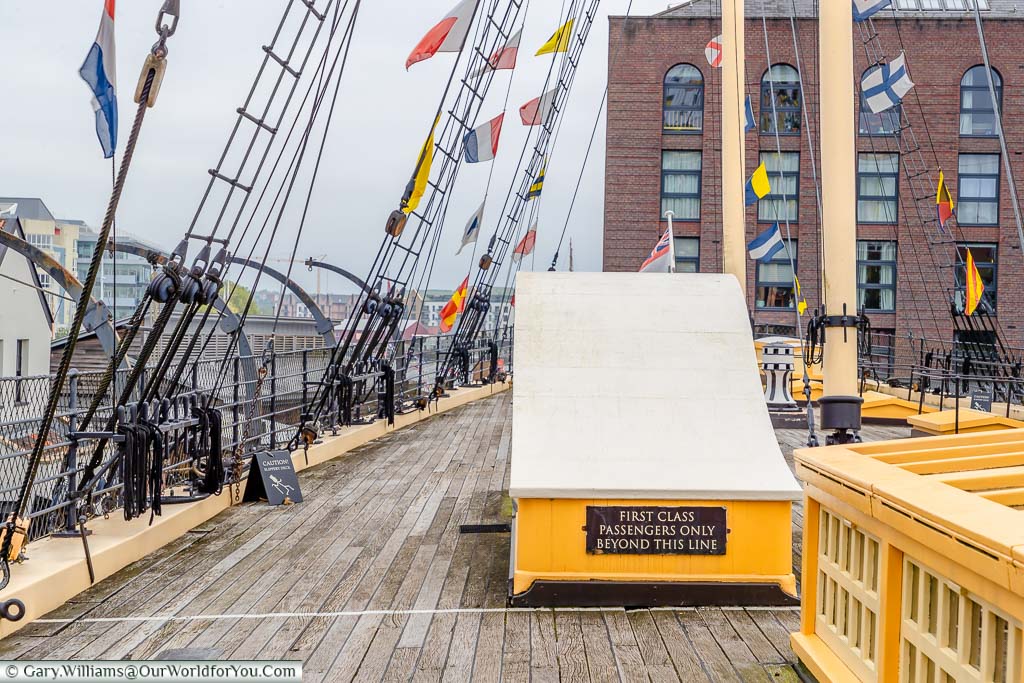
Life in Steerage
Discover the unique sights, sounds and smellsWe step down from the upper deck to navigate our way through Steerage, where the hard work takes place, and life can be a challenge.
The care and attention to detail that has been given to every element of recreating lives on board are extraordinary. Each minute feature brings to life the day to day living within the steerage quarters of the ship’s middle deck.
I know I shouldn’t give away any spoiler alerts. However, as you weave your way amongst the cabins, not only are the sounds of chatter from the Steerage crew echoing around, but you also become immersed by the smells wafting through the decks.
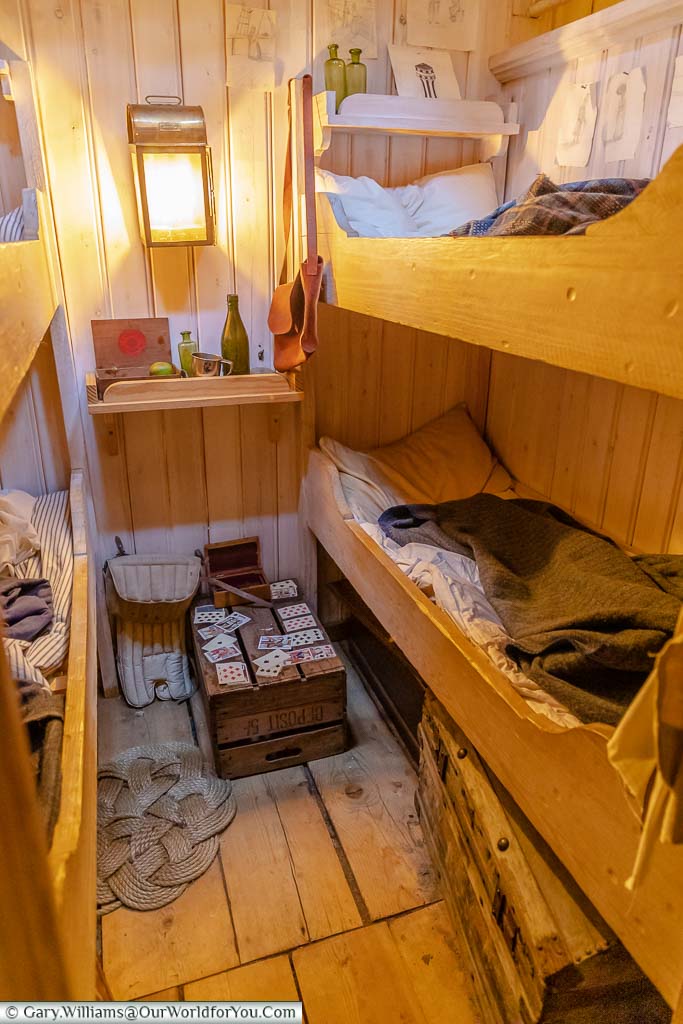
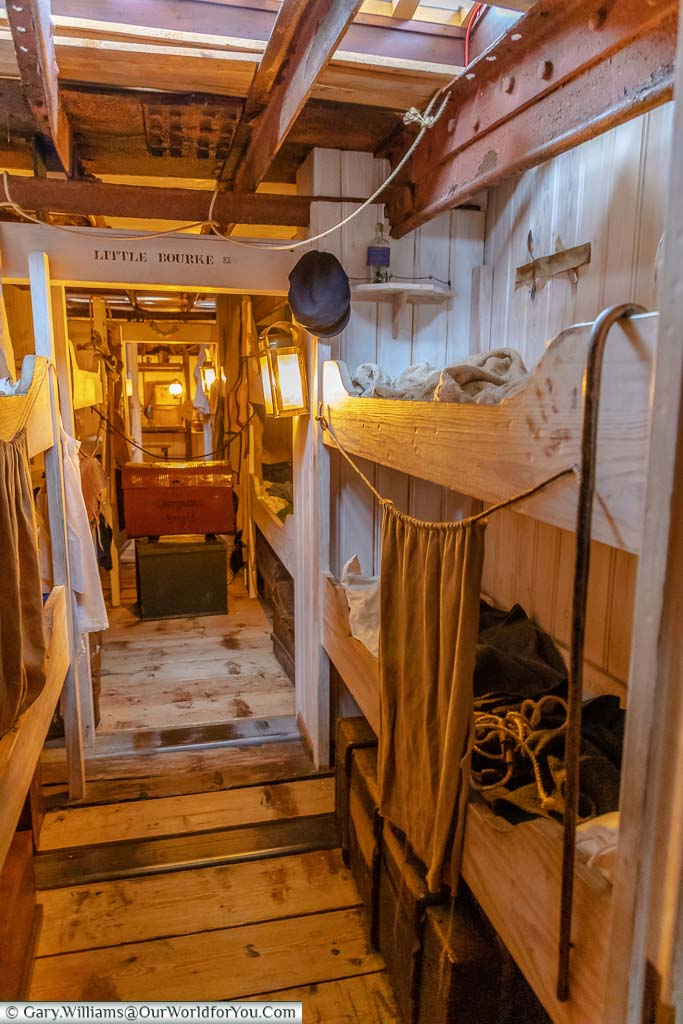
It is incredible; at times, you don’t realise the full effect of the aromas and then it becomes quite prominent, and you’re absorbed by the whole experience.
The bunks and living quarters have been recreated so well you feel like you’re interrupting peoples lives. Peeking in during their card games and watching mothers attending to their children. The whole experience is incredible.
Take a peek into the galley; life must have been frantic here preparing food for hundreds of passengers. Keep a lookout for the scurrying rats and the bubbling pots and pans. You must also step into the galley with the bread ovens; the smell of freshly baked bread is so comforting.
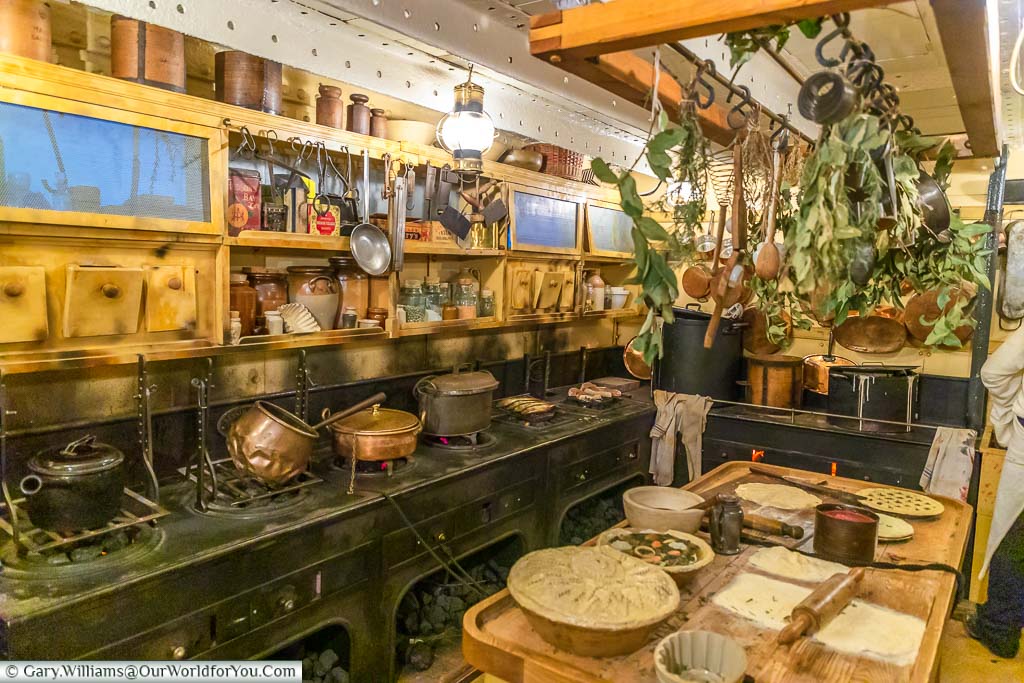
If you're intrigued to visit the historic cities of Bath and Bristol, then why not check out Lonely Planet's pocket travel guide. Full of helpful advice, interesting facts and time-saving tips.
You can pick it up for your Kindle or in good old paperback.
A little more comfort in First Class
The luxuries of space and tranquillity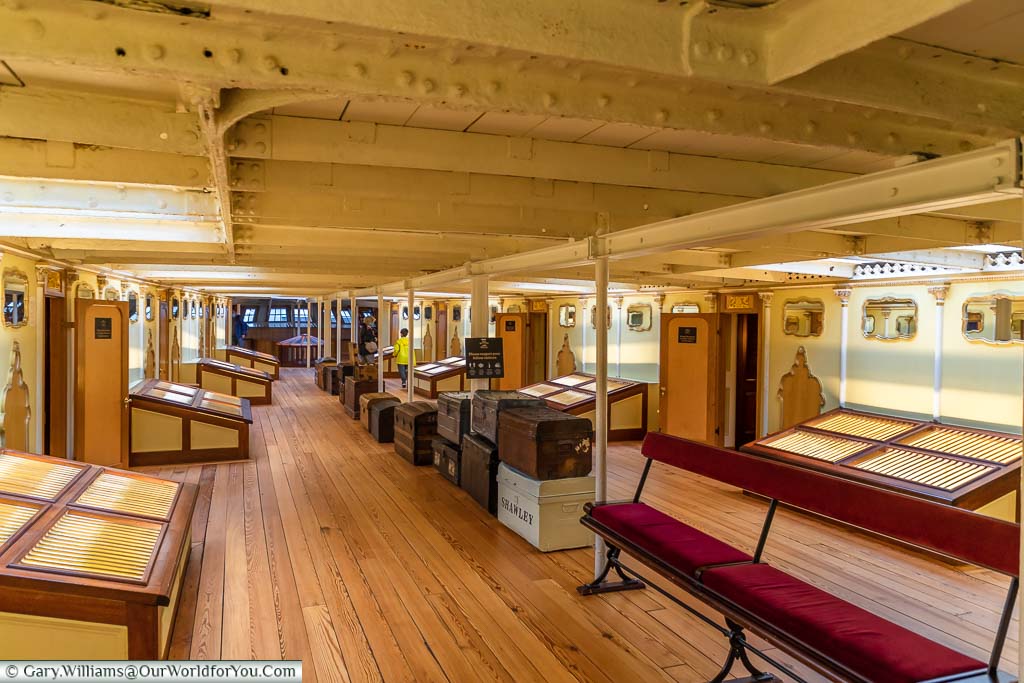
All through the stern of the Middle Deck, are where the officers’ quarters are located. Many have their own cabins; little luxuries are indulged. The peace and relaxing surroundings make for a pleasurable sail across the Atlantic Ocean or the long voyage to Australia.
A healthy crossing cannot always be guaranteed, so the skilfulness of an onboard surgeon may or may not be a welcoming sight.
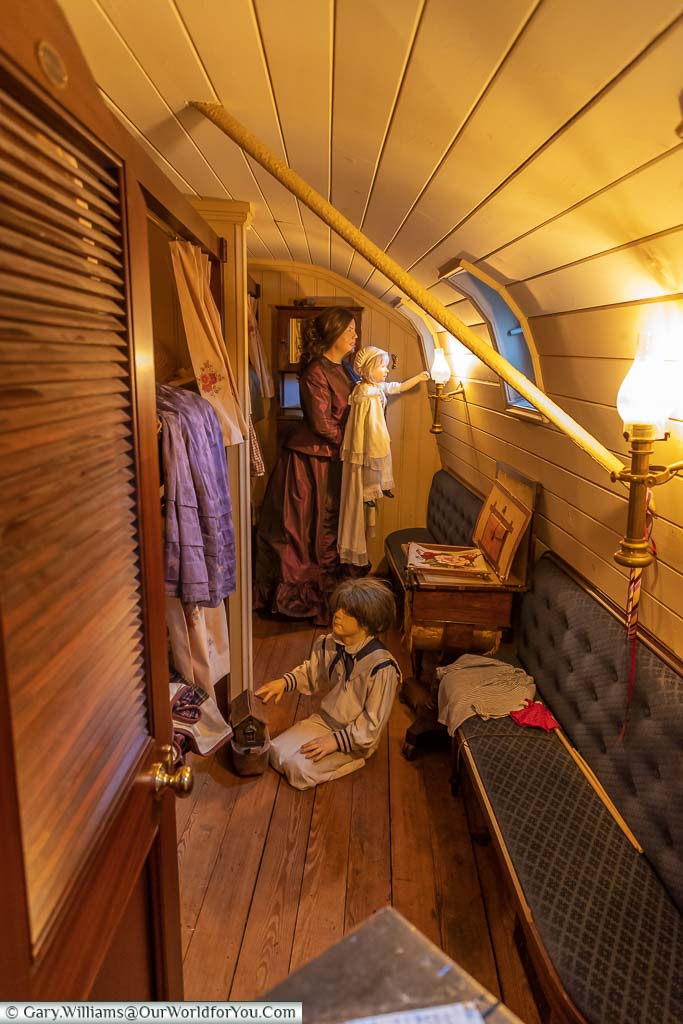
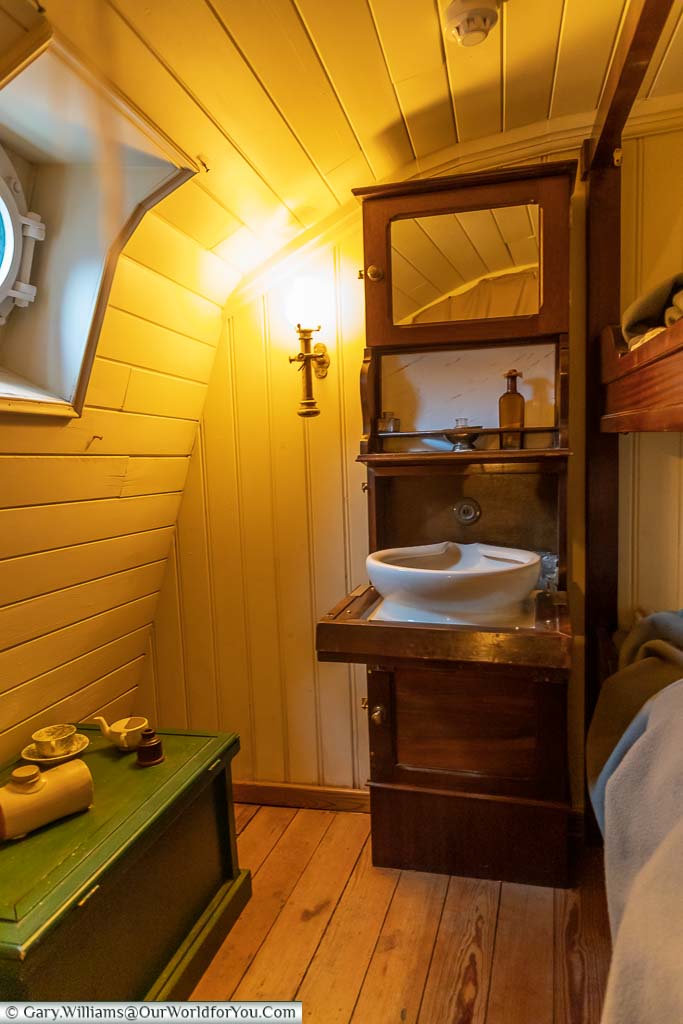
Lower Deck of SS Great Britain
From First-Class dining to the engine roomStepping down to the bottom level of SS Great Britain, we are greeted with the magnificent First-Class Dining Saloon. You would never believe you were on a Victorian ship, with the beautiful pillars lining the elegant dining hall.
Rows and rows of the finest crockery and silverware would have been meticulously laid out, waiting for the elegant guests in their finery.
Creating the ambience within the dining room you’ll overhear chitter chatter from the wealthy passengers enjoying their supper, all the while a three-piece orchestra playing soothing melodies while they dine.
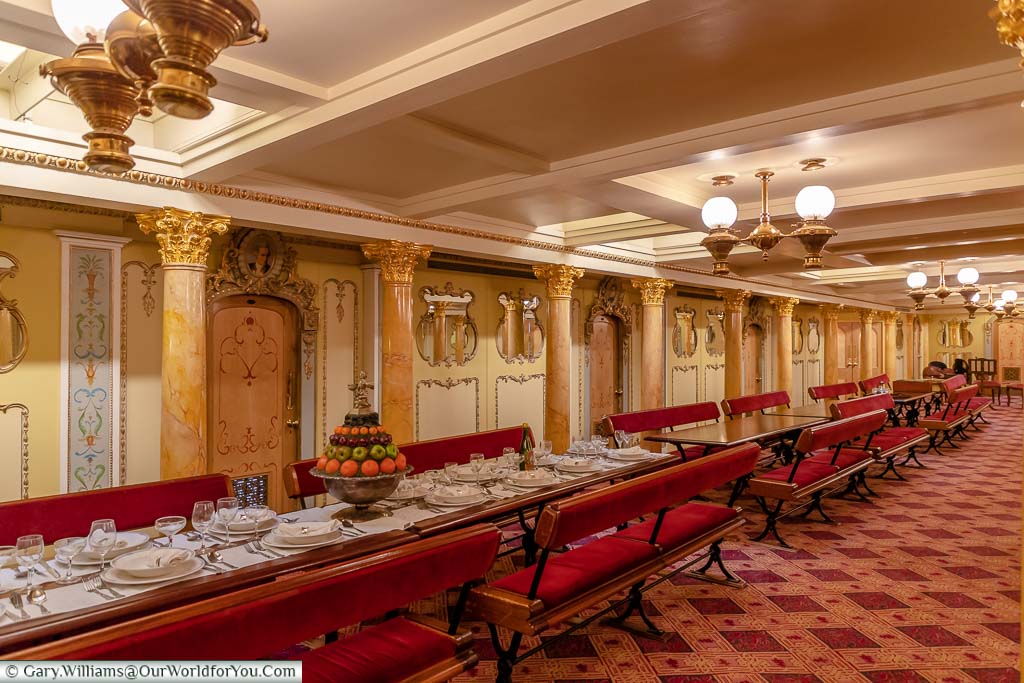
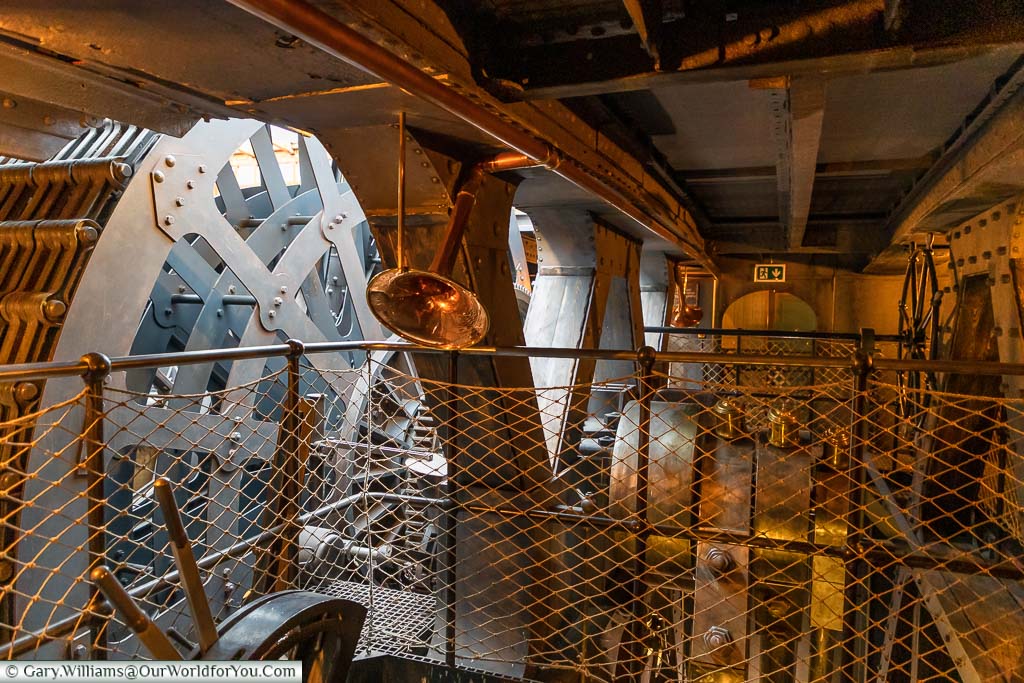
Being Brunel
The genius behind Victorian engineeringThe Being Brunel Museum is housed within the Victorian dockside offices adjacent to the ship. These traditional offices are where Brunel oversaw the design and building of SS Great Britain.
Within Being Brunel, you get to experience life at Brunel’s London home in Duke Street, how his 1850’s office would have looked and interact with the displays.
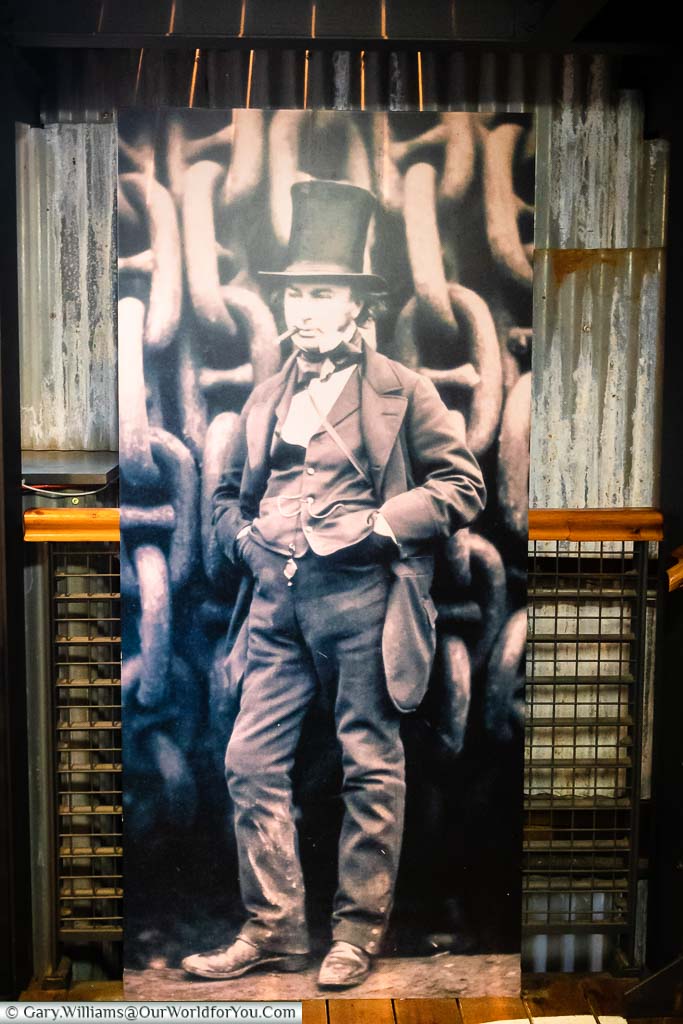
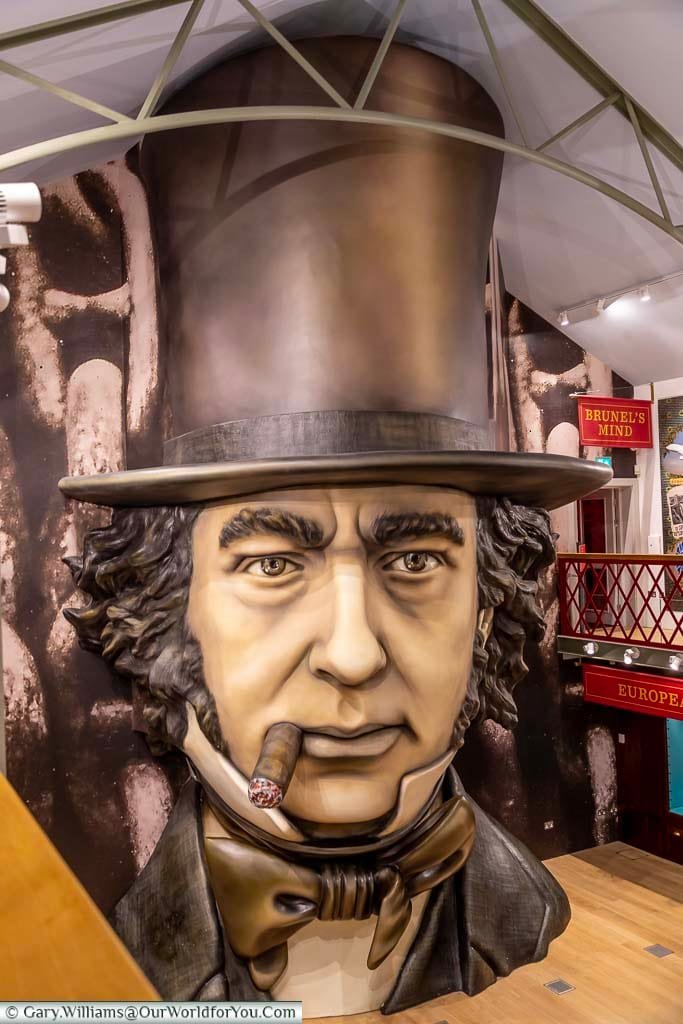
We loved the main exhibition hall; it really showcases what an incredible engineer Brunel was and his many astonishing achievements before he died at the young age of 53.
Watch the map of southwest England come to life as the Great Western Railway weaves its way through the English countryside and truly brings Bristol to the forefront of engineering.
Brunel’s plans, sketches and inspirations can be seen throughout the exhibition. Discover how he undertook the impossible and how his accomplishments paved the way for transportation today.
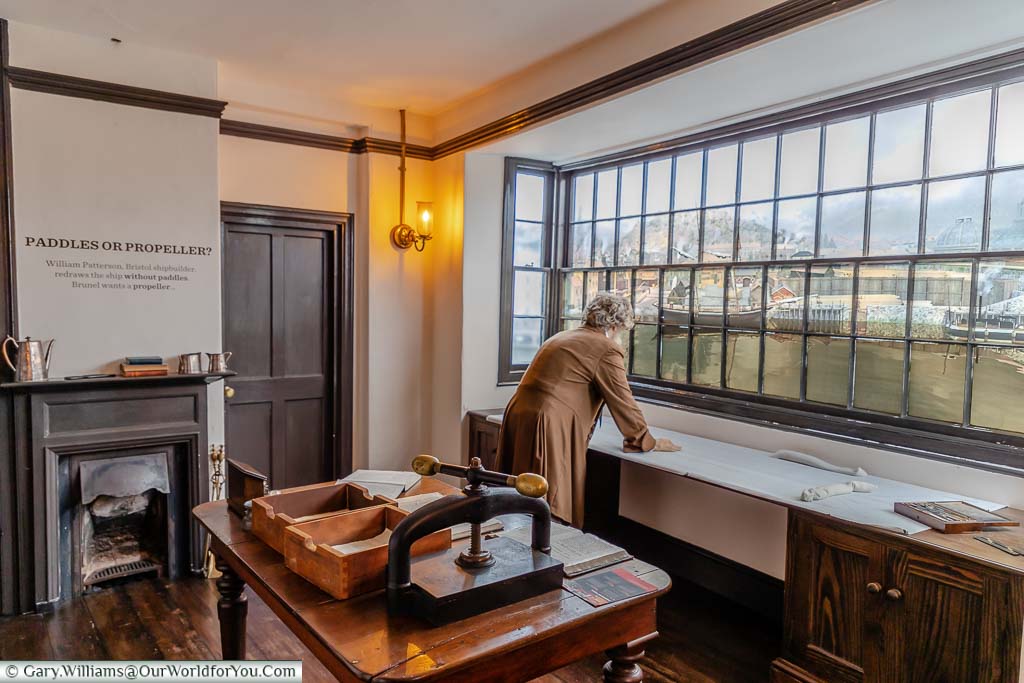
Brunel’s family grave
Kensal Green Cemetery, London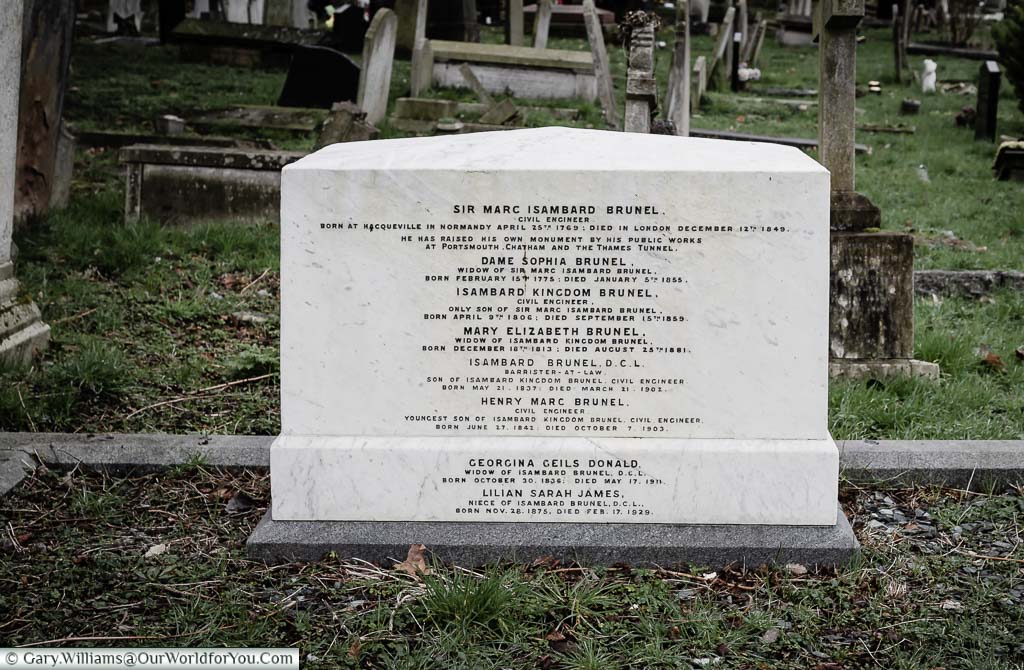
Disclaimer
* This post may contain links to affiliated sites where we earn a small commission at no additional charge to you.


